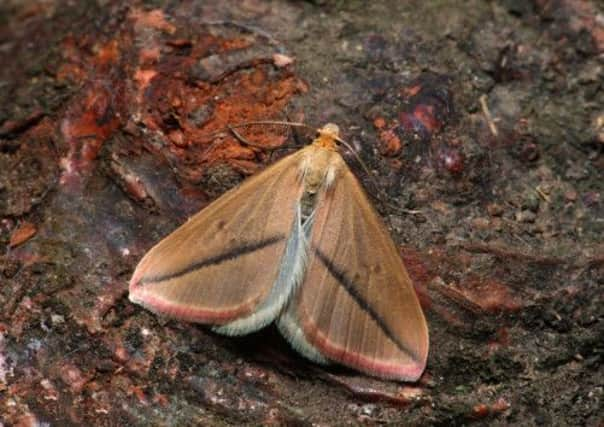Migrating butterflies here to stay, say experts


Increasing numbers of the rare migrants are believed to have been drawn to the UK by the summer heat and milder than usual autumn.
The European long-tailed blue butterfly has established itself in sites along England’s south coast, while conservation experts are excited by sightings of vestal moths (Rhodometra sacraria) north of the Border.
Advertisement
Hide AdAdvertisement
Hide AdRichard Fox, of the charity Butterfly Conservation, said: “These sightings are very exciting news, not only for the people lucky enough to see these thrilling butterflies and moths in the wild but also for the future.”
Experts have not seen such high numbers of the delicately-patterned moth in the UK for half a century and the unseasonably mild weather has seen the creature venture into Scotland and Northern Ireland. The delicate vestal moths have a wingspan of just 2cm, yet have flown in from North Africa and southern Europe.
Rare moths including the Clifden nonpareil and rosy underwing have also appeared across several southern counties, including Dorset, Hampshire, Kent, Wiltshire and Sussex.
Higher than average numbers of the exotic crimson speckled moth have also been recorded along England’s south coast.
Mr Fox said: “The hot summer enabled long-tailed blues and other migratory butterflies to spread northwards into Britain, capitalising on opportunities to breed here while the weather remains warm. This species probably won’t survive the forthcoming winter, but it seems likely that the stunning Clifden nonpareil and possibly even the rosy underwing, have already established footholds in southern England.”
The Clifden nonpareil, first recorded in Clifden, Buckinghamshire, is the largest of the underwing moths – a group which has vivid dashes of colour that ward off predators – and is recognised by a striking blue flash. The large rosy underwing has only been seen on ten occasions in Britain prior to this summer and raise the “tantalising prospect that the moth is now resident,” the charity said.
A spokesman said: “These sightings suggest that all three species may be attempting to colonise southern England, and come as the autumn moth migration gets into full swing bringing rarities such as the crimson speckled and the vestal to our shores.”
Dorset-based moth recorder Les Hill has spotted three Clifden nonpareil moths in the past two weeks in south Dorset. He said: “As the name nonpareil states, it is peerless and has no equal. To record one in a lifetime is the fulfilment of an ambition; to record them every year in my garden is just remarkable.”